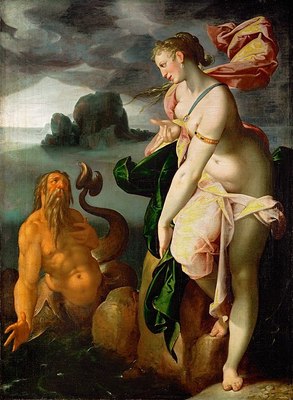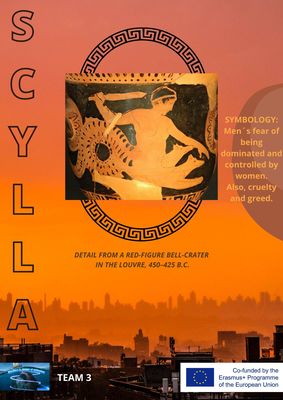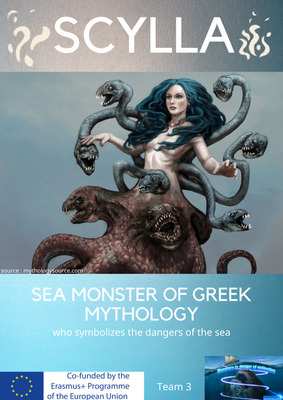
Glaucus and Scylla, Bartholomeus Spranger, 1581.
According to late classical writers Scylla was once a beautiful nymph loved by the sea-god Glaukos (Glaucus), but her jealous rival, the witch Kirke (Circe), employed magic to transform her into a monster. Older poets, however, envisaged Skylla as simply a monster born into a monstrous family.
SKYLLA (Scylla) was a sea-monster who haunted the rocks of a narrow strait opposite the whirlpool of Kharybdis (Charybdis). Ships who sailed too close to her rocks would lose six men to her ravenous, darting heads.
Homer describes Skylla as a creature with twelve dangling feet, six long necks and grisly heads lined with a triple row of sharp teeth. Her voice was likened to the yelping of dogs. Theoi Greek Mythology.

In this activity, after discusings about the simbolysm of the Scylla, you are going to collaborativelly create a poster with canva for the Female Monster Museum from artworks.
The poster shall include:
-The name of the monster.
-The title of the artwork or artworks that appear on the poster.
-The name of the authors of the artworks that appear on the poster.
-Some written and oral annotations in English explaining the symbolism of the female monster.
-The number of the transnational group: 3
-The logo of the project and the European Union.
-To create the poster in a collaborative way, we are going to use the tool: canva.
-In each poster you could create more tha one page.
-To enter canva you have just to copy the link corresponding to your international group.

Poster - team 3

